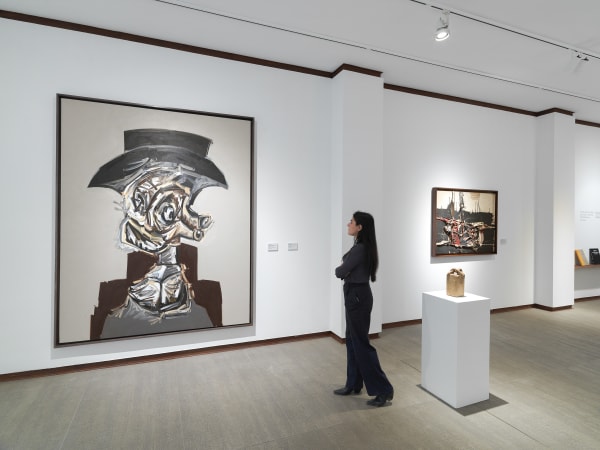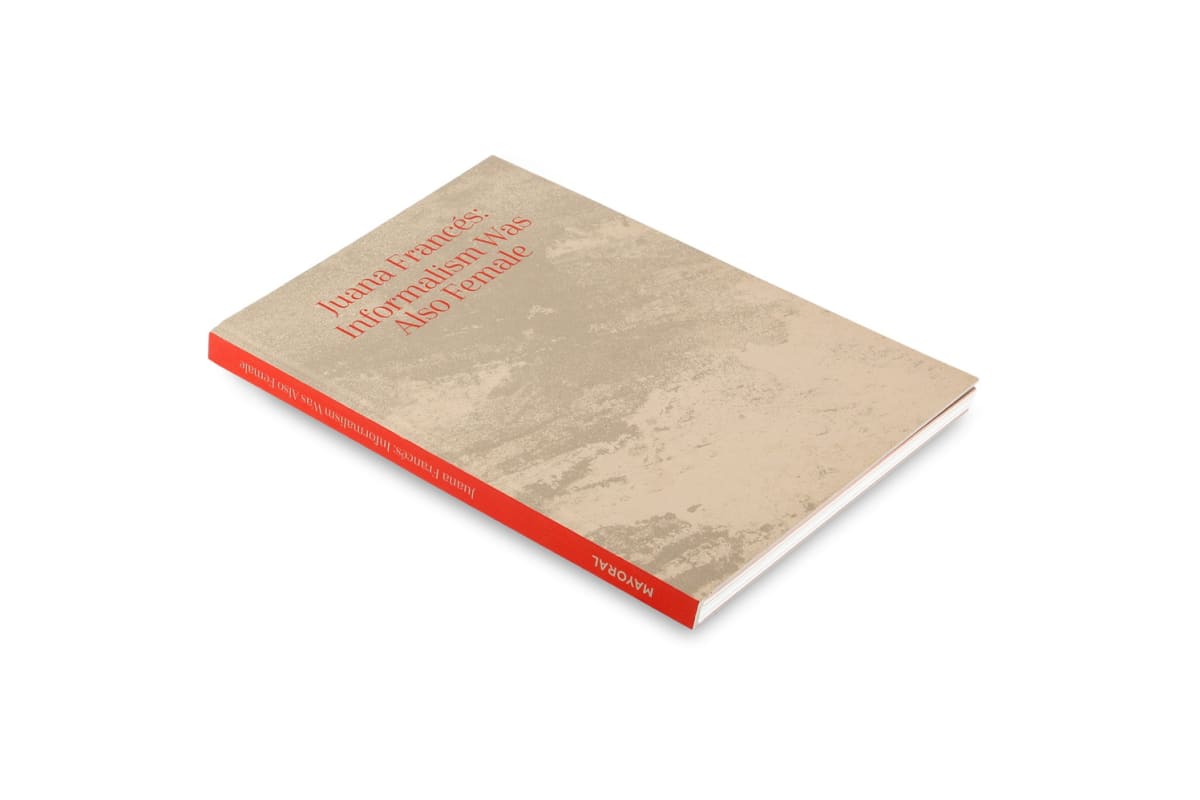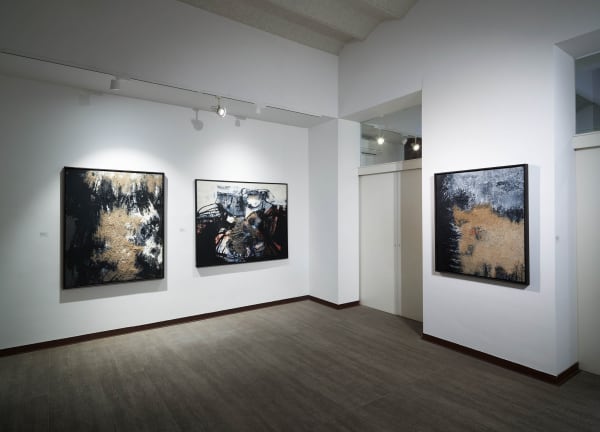Juana Francés Alicante, 1924-Madrid, 1990
“I regularly used broad brushes; the impressions I did with big palette knives. I also used gestural watering, mainly to move sand and grit; this consisted in flinging water, with or without colour, on top of the textures. On occasion I strewed sand and grit on the base of acrylic glue, which I later modified with the brush, producing rhythms with the brushstrokes.”- Juana Francés
Juana Francés is one of the most forceful artists of the Spanish visual arts trajectory of the 20th century. Despite being the only woman among the founding members of the group "El Paso," her artistic prowess was not always duly acknowledged, although her strong character and intense sensitivity were evident throughout her career. From the very beginning, Francés embarked on a profound exploration, delving into various artistic languages and employing diverse materials while embracing different genres. Her interests spanned wide, encompassing figuration, abstraction, materiality, color, landscapes, and the human form. Today, Juana Francés is widely regarded as a paradigmatic figure in the realm of contemporary Spanish avant-garde art.
-

EXPLOSION
BARCELONA 11 Jan - 26 Mar 2024Mayoral brings together works by Joan Miró, Antonio Saura, Equipo Crónica, Eulàlia Grau, Antoni Tàpies, Manolo Millares, and Juana Francés presented through the gaze of two explosive scenes from Michelangelo...Read more -

Saura in his context
BARCELONA 13 Apr - 30 Jun 2023This exhibition, organized in conjunction with Enrique Juncosa, presents six very characteristic works by Antonio Saura (1930-1998), one of the most important Spanish artists of the 20th century, in dialogue...Read more -

Resurgent Light
PARIS 20 Jan - 2 Apr 2022Mayoral presents an exhibition on Juana Francés and Maria Helena Vieira da Silva, two women who both experienced forms of exile and displacement and broke numerous codes for “women-artists”. Curated...Read more -

Zóbel and the Great Post-War Generation
MADRID 12 - 21 Mar 2021Mayoral’s first exhibition in Madrid, ‘Zóbel and The Great Post-War Generation’, will be held from the 11th to 21st March at the Fundación PONS. The exhibition brings together more than...Read more
-

Gestures and Geometries: Two Exceptions | Elena Sorokina
Elena Sorokina, curator of " Resurgent Light" by Juana Francés and Maria Helena Vieira da Slva talks about the exhibition January 27, 2022Juana Francés, Maria Helena Vieira da Silva, female artists, exhibition, Mayoral, Resurgent LightRead more -

Maria Helena Vieira da Silva – Juana Francés | Pierre Léglise-Costa
Pierre Léglise-Costa talks about the exhibition "Resurgent Light" at Galeria Mayoral, Paris January 27, 2022Juana Francés, Maria Helena Vieira da Silva, female artists, exhibition, Mayoral, Resurgent LightRead more -
![Art Talk: Conversations with 12 Women Artists [excerpts] by Cindy Nemser](data:image/gif;base64,R0lGODlhAQABAIAAAAAAAP///yH5BAEAAAAALAAAAAABAAEAAAIBRAA7)
Art Talk: Conversations with 12 Women Artists [excerpts] by Cindy Nemser
Cindy Nemser interviews Barbara Hepworth and Lee Krasner June 26, 2020Barbara Hepworth United Kingdom, 1903-1975 Barbara Hepworth (BH): Well you need to know what to do and discipline yourself. I mean my home came first...Read more -

Interviews with Juana Francés
Juana Francés' interviews by Luis Blánquez Benito April 7, 2020juana Francés at the Ateneo [1] Luis Blánquez Benito (LBB): In our Studios we have the painter Juana Francés, who is currently holding an...Read more -

A Conversation between Boye Llorens and Isabel Tejeda
On the occasion of the exhibition "Juana Francés: Informalism Was Also Female" at Galeria Mayoral, Barcelona March 27, 2020Boye Llorens (BL): The Juana Francés exhibition at the Mayoral gallery focuses on the years between 1957 and 1962, an Informalist phase closely linked to...Read more -

A Conversation between Carles Guerra and Agustín Pérez Rubio
On the occasion of the exhibition "Juana Francés: Informalism Was Also Female" at Galeria Mayoral, Barcelona February 12, 2020Agustín Pérez Rubio (APR): The Francés case is the typical case of an artist who is totally undervalued in her context. Even though she’s had...Read more -

Juana Francés: 1957-1962 | Tomàs Llorens
Tomàs Llorens talks about his curated exhibition "Juana Francés: Informalism Was Also Female" at Galeria Mayoral, Barcelona January 24, 2020The period from 1957 to 1962 encapsulates one of the most brilliant episodes in the history of Spanish modern art. A group of painters and...Read more













![Art Talk: Conversations with 12 Women Artists [excerpts] by Cindy Nemser](https://artlogic-res.cloudinary.com/w_600,c_limit,f_auto,fl_lossy,q_auto/ws-artlogicwebsite1593/usr/images/news/main_image/42/05nemser1-mediumsquareat3x.jpg)



